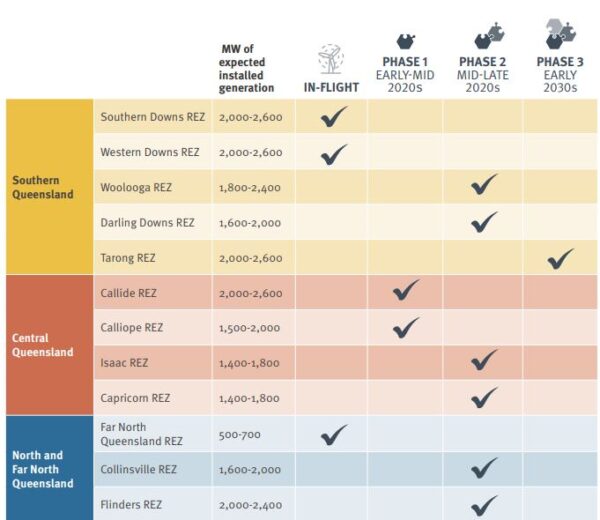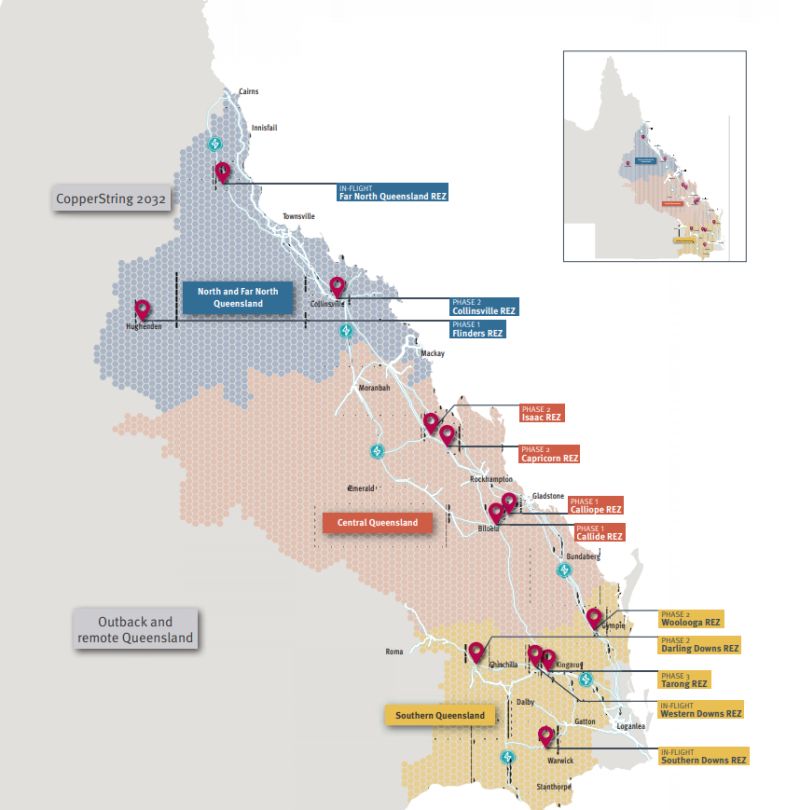Queensland has launched an updated renewable energy zone (REZ) roadmap that lays out a framework to strategically connect about 22 GW of renewable energy to the grid in 12 coordinated zones across the state’s southern, central, and northern regions.
Queensland Energy Minister Mick de Brenni said the REZs will be central to the state’s clean energy transition and ambitions, including sourcing 70% of the state’s power from renewables by 2032 and 80% by 2035. To achieve these targets, the Queensland energy system needs around six times more large-scale wind and solar generation by 2035 than is currently operating in the state.
De Brenni said in addition to driving the energy transformation, the REZs will maximise economic opportunities, support supply chain resilience, and bring thousands of jobs and opportunities to regional areas.
“The REZ roadmap paves a clear way forward to ensure all regions of the state benefit from the economic and investment opportunities renewable energy brings,” he said.
“We’re taking intentional, measured steps to deliver a clear and detailed framework, which has never been rolled out in Australia on this scale before.”
“Connecting the right renewable technologies at the right time and in the right locations will deliver tangible and long-lasting benefits to our communities and economy.”
The roadmap, a draft version of which was published in July 2023, identifies 12 potential REZs to play host to new wind, solar and storage that will be connected to the grid.
The identified zones include the Southern Downs, Western Downs and Far North Queensland REZs, that are already progressing under the existing National Electricity Rules.

The state government said the ultimate size, location and timing of REZs may evolve based on analysis of available network capacity, renewable resources, project pipeline, investor interest, land use and optimal network expansion. Additional REZs may also be identified in the future to support changing energy needs.
As part of delivering the REZs, the Queensland government has allocated up to $6 million (USD 3.92 million) to undertake initial readiness assessments to better understand the potential suitability of areas for REZ development and $20 million to support the outcomes of the first of these assessments.
The REZ readiness assessment process will investigate a range of issues, including infrastructure, transport, housing and accommodation, workforce, supply chain, and environmental challenges, as well as local industry and First Nations considerations.
The roadmap indicates that reference groups comprising local landholders, councils, cultural representatives and energy consumers will be established for each of the 12 REZs to help guide development and maximise benefits for both communities and the state.
The REZ readiness assessments will begin this year, with the proposed Callide REZ in central Queensland likely to be the first officially declared zone. Engagement with communities is due to commence in the first half of 2024.
Assessments of those zone in the north and south of the state are expected to commence later in 2024.
This content is protected by copyright and may not be reused. If you want to cooperate with us and would like to reuse some of our content, please contact: editors@pv-magazine.com.









Given the current cloudy weather over much of Queensland for well over a week, I would like to know what % of Queensland’s electricity generation this week had to come from fossil fuel power stations.
Also what contingencies are proposed for future weather events that would adversly affect widespread wind and solar output for significant periods.